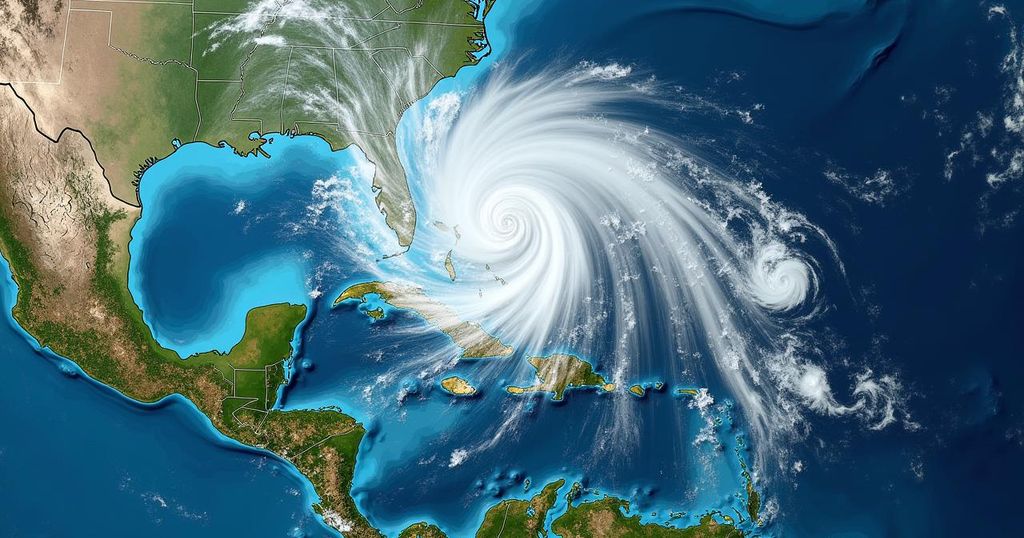Tropical Cyclones: Formation, Patterns, and Movement

Tropical cyclones are powerful storm systems that mainly develop in warm tropical oceans, forming around 80 storms annually. They predominantly occur within 20° of the Equator, with the Pacific Ocean generating the highest number. Their formation is facilitated by favorable ocean temperatures and atmospheric conditions, most commonly during late summer to early fall in each hemisphere. Cyclones typically move westward before curving poleward, influenced by trade winds and the Coriolis effect.
Tropical cyclones are large storm systems that predominantly develop in tropical ocean regions, forming approximately 80 storms each year, with around two-thirds achieving severe status (category 1 or higher on the Saffir-Simpson scale). These storms mostly appear within latitudinal boundaries of 20° north or south of the Equator, as cooler sea surface temperatures beyond these zones inhibit cyclone formation. Furthermore, only two tropical ocean basins—the eastern South Pacific and the South Atlantic—do not support these storm systems because they are affected by cooler currents that deter cyclone development. The Pacific Ocean produces the largest number of tropical storms, with the most powerful variations, known as ‘super typhoons,’ primarily seen in the western Pacific. The Indian Ocean ranks second in storm production, followed by the Atlantic Ocean. Typically, tropical cyclones surface during the warm season. The peak occurrence of these storms takes place after the year’s peak in solar radiation, with the Northern Hemisphere experiencing maximum cyclone activity from July to September and the Southern Hemisphere from January to March. Favorable atmospheric circulation facilitates tropical cyclone generation, particularly in lower latitude regions where warm ocean waters exist. Most Atlantic and eastern North Pacific cyclones originate from large-scale circulation systems characterized by easterly waves, which may intensify under suitable conditions. In the western Pacific, upper-level low-pressure zones contribute to cyclone formation by drawing air from the centers of developing disturbances, resulting in decreased surface pressures, thereby encouraging cyclone development. Several geographic elements also play a role in cyclone development; for instance, the mountainous terrains of Mexico and Central America modify easterly waves to foster the emergence of cyclones in adjacent eastern Pacific zones. When analyzing the movement trajectories of tropical cyclones, it is observed that both Northern and Southern Hemisphere systems primarily drift westward while gradually advancing poleward due to general atmospheric circulation patterns. Tropical trade winds are the primary drivers of the westward motion of these storms. Their poleward path is influenced notably by large areas of subsiding air known as subtropical highs, which operate under anticyclonic circulations. The Coriolis effect further enhances poleward movement until the cyclones shift from westward to eastward trajectories, a transition known as recurve. Cyclones in the Northern Hemisphere can journey to higher latitudes compared to their Southern Hemisphere counterparts because of warmer ocean currents such as the Gulf Stream, which provide additional energy. This can result in intense tropical systems making landfall as far north as Boston, while on the west coast of the United States, hurricanes typically deteriorate upon approach due to cooler ocean waters.
Tropical cyclones are significant meteorological phenomena originating in tropical oceanic regions where warm sea temperatures provide the necessary heat and moisture. They play a crucial role in weather dynamics and can have severe impacts on coastal regions. Understanding their formation, movement, and categorization is essential for developing effective forecasting methods and mitigating potential damages.
In conclusion, tropical cyclones are critical weather systems primarily formed in warm tropical oceans, with their configuration and movement strongly influenced by atmospheric and geographical factors. The Pacific Ocean is the leading basin for cyclone generation, while the seasonal patterns of these storms underscore the importance of solar radiation and ocean temperatures. Additionally, movement patterns are dictated by trade winds, subtropical highs, and the Coriolis effect. Enhanced understanding of these elements is essential for effective cyclone forecasting and disaster preparedness.
Original Source: www.britannica.com






